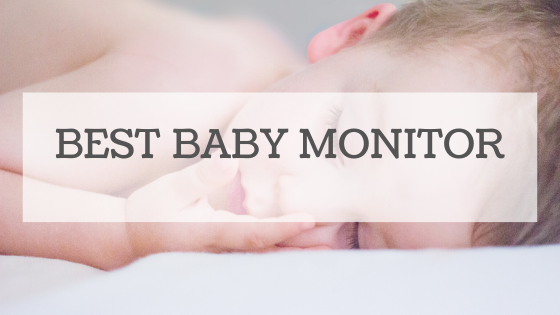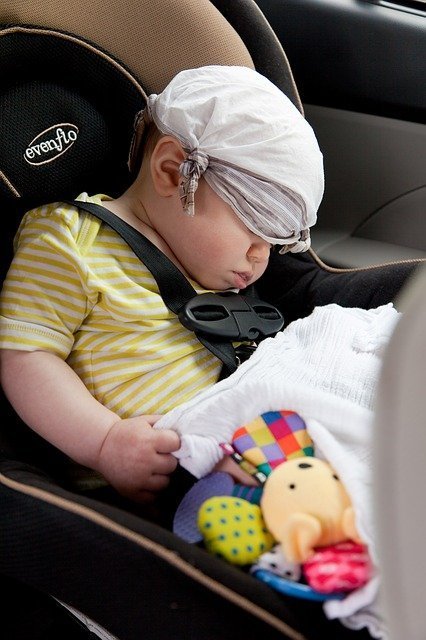
Best baby monitor you can buy – how to choose the right product:
Baby monitors promise permanent monitoring of every newborn baby via a mobile transmitter and receiver and a nervous relief for all new-born parents. Some manufacturers go so far as to claim that you can leave the complete babysitting to the baby phone. Isn’t this too high a poker game? Young parents in particular cannot imagine completely leaving control of their baby to an electrical monitoring device. We have examined the practical helpers in Babyphone Comparison. You can find the results of our purchase advice in the table above. Various components such as radiation exposure and acoustics play a decisive role in the purchase of a baby monitor. Is the built-in transmitter sensitive enough to hear even the quietest sounds? In terms of distance, many baby phones quickly reach their limits. For example, the manufacturer of DECT baby monitors promises the highest range of 300 m, but is unable to meet this range in the practical baby monitor test of some users. The Babyphone Comparison tells you everything you need to know about the best baby monitor – and what you should definitely consider when buying it.
1. Babyphone: These categories exist
The classic baby monitor consists of a simple transmitter-receiver combination. The transmitter is placed on the baby cot and transmits the sounds from the nursery to the mobile reception module. So parents can quickly hear when their little treasure gets restless or even cries, without having to stay within hearing range themselves. In most cases, the sensitivity of the baby phone can also be adjusted, so that you are not necessarily alerted at the slightest whining – after all, some babies often make sounds even when they sleep deeply and firmly.
But there are also many other models with numerous additional functions. The baby monitors with a motion detector recently caused a sensation. They not only monitor the noises, but also the baby’s movements and breathing via a sensor mat. These mats can be effortlessly combined with a baby monitor. Sudden infant death is one of the biggest concerns of young parents. Even if the own baby does not belong to the risk group, many do not want to do without an optimal all-round monitoring. The respective sensitivity of a mat can be individually adjusted and provides in connection with a baby sleeping bag an increased measure of security.
Whenever possible, we surround ourselves with smartphones, tablets and WLAN surfing through the World Wide Web. So it’s not surprising that there is also a baby monitor with a smartphone connection. The latest developments on the baby phone market also offer modern, interference-resistant baby monitor apps, such as the Baby Monitor Deluxe app for powerful smartphones, which solves the problem of limited range. On the other hand, mobile phones have a higher electromagnetic field. A smartphone is in the nursery, the app is activated. If your baby exceeds a fixed noise level, the call goes out to another phone.
Let’s talk about the potential risk of electrosmog in this context. This can be traced back to the transmission of a radio signal. Many baby monitors are thus becoming permanent radiators. Even if no screaming is transmitted, these radiate their pulsed radio waves in continuous power. At this point it should be noted that the majority of manufacturers have applied a copper coating to the inside of the housing in order to reduce electrosmog pollution. If we compare digital and analogue devices, the digital representatives do not use these radio waves. Öko Test has dealt extensively with the question of materials, environmental and radio pollution and has only highlighted those products that stand out due to their optimal results.
2. The range and transmission of the signals: analogue or digital?
The baby monitor establishes a direct connection between the parents and their sleeping child. A device is located in the room where your baby slumbers and is called a transmitter in this context. This transmitter in turn has a microphone that picks up all the sounds in the room and transmits them to the second device, the receiver. The associated transmission is usually linked to a radio link. Some models use the home power grid to transmit the signals to the receiver.
Even though the features of most products vary considerably in this context, baby monitors are based on this simple basic principle. If you opt for an analogue device, it can happen that the sounds of another baby in the vicinity dial into the network and interfere with the channel. Especially in densely populated residential areas, a large number of analogue baby phones that access the same channel often cause interference. What you then hear may not be your own child, but may also be that of your neighbour.
On the other hand, the digital devices score above all with their interference immunity and optimum speech quality. Some brands are able to switch from one channel to the next in the event of potential interference. This is the addition of the automatic channel search function. This, in turn, is externally specified in the scope of functions of a manufacturer.
Soon the advantages and shortcomings of a digital device will be explained again:
In our baby monitor comparison, we therefore recommend choosing a digital baby monitor, especially if you live in a densely populated area. In a detached house with a large plot of land, an analogue model may be sufficient.
3. comparing the features of baby monitors
3.1 The basic equipment
If you are using your baby monitor for the first time, be sure to read the manufacturer’s operating instructions first. The manufacturers of the leading brands in particular provide easy-to-understand, illustrated instructions. The individual key assignments and steps are clearly described in a pictogram.
A device should offer the following basic functions if you want to buy a baby monitor cheaply:
- Pause
- microphone
- volume control
- nightlight
- temperature sensor
- battery indicator
- On- and Off-function
- paging key
It is up to you to decide which additional functions you require for your baby monitor. The leading manufacturers outperform each other with an enormous number of different functions and accessories, such as the option to play a lullaby or the reverse transmission of sound from the parents to the baby’s receiver unit. The monitors in particular are a popular extra. These are placed next to the parent unit and project the image of the sleeping child. Audio monitoring is thus extended to audio-visual monitoring.
3.2 An additional display: so that you can keep an eye on everything
The criticism that the illuminated display interferes with the baby’s sleep can weaken the manufacturers of products whose lighting can be dimmed. If the baby monitor switches to sleep mode, the intensity of the mostly blue lighting will also be minimized. Depending on whether you have purchased a baby monitor with a camera and an additional monitor, the monitor will be added to the receiver module.
On the display, you can keep track of all relevant information that is important for the operation of the baby monitor and the monitoring of your child, such as the audio sensor or the possible exceeding of a range as well as a low battery status. In most cases, the volume can also be viewed and adjusted.
In our baby monitor comparison displays offer the following displays:
- Battery capacity
- temperature display
- alarm function
- nightlight
- date
- time
- volume
- lullaby option
3.3 Protection against inadvertent operating errors
As an alternative to operating the parent unit, some devices offer a remote control. But what happens if it is accidentally pressed? If the baby monitor is switched off automatically without a parent noticing, this is a situation that nobody wants to live with. Some baby monitors, such as the Philips Avent DECT, protect against this with a warning signal. If you move outside the reception area or the battery goes into low mode, the indicator lights up or beeps and you are warned.
4. environmental characteristics: power consumption & radiation exposure
The manufacturers Philips, Switel, Topcom and Chicco partly work with TEC technology. These products have a comparatively high radiation exposure, although according to the Federal Office of Public Health a long-term effect of the radiation exposure has so far not been scientifically proven.
Other studies also assume side effects, such as sleep disorders. The head of the test series, Wolfgang Herter, advises to place the continuous emitters at a greater distance from the baby. The manufacturers Switel, Topcom and Philips reacted to this babyphone test and referred in this context to their low-radiation ECO function.
4.1 What experts say about the exposure of baby monitors to radiation
In April 2014 the ÖKO-TEST editorial staff conducted a thorough investigation and discussion on this topic. Many manufacturers promised to increase safety when handling baby monitors. Nevertheless, an enormously high permanent exposure due to constant radiation is noticeable in this context. If the baby monitor is wireless via DECT technology, continuous radiation can be assumed in this case. ÖKO-TEST goes so far and advises parents not to place these baby monitors in the newborn’s room. Nevertheless, it was found that the differences in radiation exposure from baby monitor to baby monitor vary enormously.
Observe the following instructions when using the DECT devices:
- Do not place the device in the immediate vicinity of the baby, but place it at a distance of 2 to 3 meters.
- Make sure you purchase an excellent voice quality, because this is the only way the transmitter reacts sensitively to ambient noise and can still reliably transmit sounds at some distance.
- If you are not using the baby monitor, unplug it and deactivate it. In this case, the radiation exposure will go towards 0.
4.2 Analog baby monitors as a low-radiation alternative?
Whether analog or digital – a baby monitor is an electrical device that generates electric fields. These are generated when the device is switched on. To completely avoid this step would mean for you to completely do without the baby monitor. In this comparison, analogue baby monitors are considered to have lower radiation levels. This is where the TCO standard comes in, which prescribes a limit value and 10 V/meter for baby monitors.
Digital devices, on the other hand, work with DECT technology. This is considered to be more radiation-intensive than analogue devices. Nevertheless, in contrast to the analogue models, digital devices score points with significantly improved voice quality, an enormously long range and automatic channel search. It is therefore best to use devices that advertise themselves with energy-saving operation. This means that your batteries can be used for a longer period of time and the radiation is reduced.
4.3 How to reduce electromagnetic radiation
The following technologies can be distinguished in connection with a baby monitor:
Analogue devices: These baby monitors have a maximum of eight different channels and are prone to interference. It is also possible to listen to the devices unencrypted from the outside. It can happen that the products collide with another signal and suddenly the sounds of the neighbour can be heard. Analog baby monitors usually also have poorer speech intelligibility.
Digital devices: The functionality is comparable to that of mobile phones. The advantages are obvious at first glance: digital baby monitors score points for excellent speech intelligibility and are virtually bug-proof. Some devices allow communication with the baby. They can also be combined with a TV set or a display. The radiation exposure is considered to be reduced if the devices are only switched on when a noise is perceived. If the device has a standby mode, it does not transmit any radio waves in this idle state. The actual radiation exposure occurs only at the time when a sound is heard. These devices should not be in close proximity to the head of a newborn.
PMR: This abbreviation stands for Private Mobile Radio – a technology that primarily uses radios. These transmit in a frequency range from 446 to 46.100 MHz. The great advantage of PMR technology is the enormous range that analogue and digital baby monitors cannot compete with.
The media sometimes talk about the harmlessness of radiation exposure without considering the individual case. It is assumed, for example, that radio waves and mobile phone radiation could have a carcinogenic effect and promote the development of tumours. To this day, this assumption has not been completely refuted, but it has not been proven either. The manufacturers point out that radiation exposure is not harmful if a specified standard limit value is not exceeded.
5. How do I find the right baby monitor?
If you are thinking of buying a baby monitor to monitor your offspring, you should consider a number of factors. We have already introduced you to different types, functionalities and techniques of baby monitors. If you want to buy a baby monitor, you should first know what you need and what you can do without.
Baby monitors are available at electronics stores such as Saturn, Media Markt, Expert or Conrad, as well as at numerous online shops. In the case of baby monitors, it is rather difficult to answer the question of whether buying in a shop has advantages over the Internet. After all, local selection is usually much smaller and prices are generally higher. And even if you can try out the device of your choice in the store, this does not reveal anything about the actual range at home. Even the susceptibility to radio interference cannot really be checked here.
On the other hand, many online shops offer their customers the opportunity to rate products purchased from Reer or Motorola, for example. Studying customer opinions may help you decide for or against a baby monitor.
Ultimately, it is in your hands which device from the baby monitor comparison exactly meets your needs and those of your children in all respects. The most important purchasing features are:
- the operating mode,
- the range,
- the functionality,
- the waitress,
- the capacity of the batteries or accumulators and
- the intensity of the radiation.
6. baby monitors as a preventive measure: sudden infant death
Sudden Infant Death Syndrome (SIDS), i.e. the unexpected death of an infant, usually occurs at bedtime. Especially in the industrial nations one speaks in this connection of one of the most frequent causes of death with children after the newborn period. The most risky time is the first year of life, with up to 6% of deaths occurring even after the first birthday. Doctors associate the following risk factors with sudden infant death:
late mothers,
a sibling who has already died of sudden infant death,
Drug use,
a premature birth,
Heat accumulation while sleeping,
insufficient air circulation,
the baby’s prone position.
The frequency of sudden infant death has drastically decreased compared to the nineties. Just a few years ago it was estimated that 1300 babies per year died from the phenomenon. Today it is still about one tenth. In 2010, 164 children died of sudden infant death.
They can take some precautions to keep the risk as low as possible. The following factors have emerged from experience and are considered effective today:
- a smokeless home,
- a maximum temperature of 16-18° in the nursery,
- a firm mattress,
- a stable and individually fitting sleeping bag,
- the supine position of the newborn.
Manufacturers of baby monitors have responded to the phenomenon of sudden infant death by taking precautions. So-called sensor mats for their devices indicate when the baby stops breathing, does not move for a long time or is threatened with heat accumulation. For children at risk, doctors recommend a sophisticated home monitoring system.
The manufacturer Angelcare takes a leading position here, because it combines its baby monitors with a mat that emits an alarm as soon as it stops breathing. Especially in an emergency, it can be the minutes that save a baby’s life. The Angelcare AC401 model is particularly recommended. The respective sensitivity is adjusted to the individual needs. If your child still sleeps in his or her parents’ bedroom during the first few months, this device can be used as a pure motion detector.





